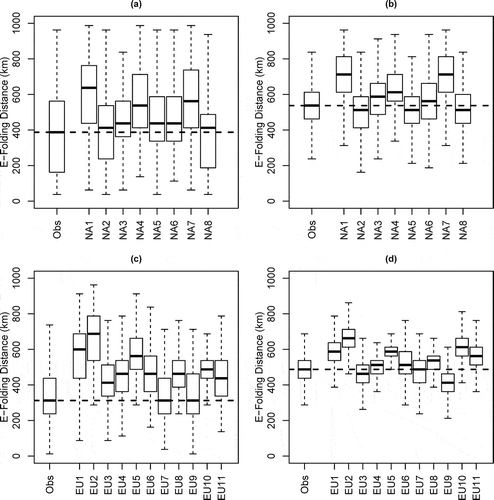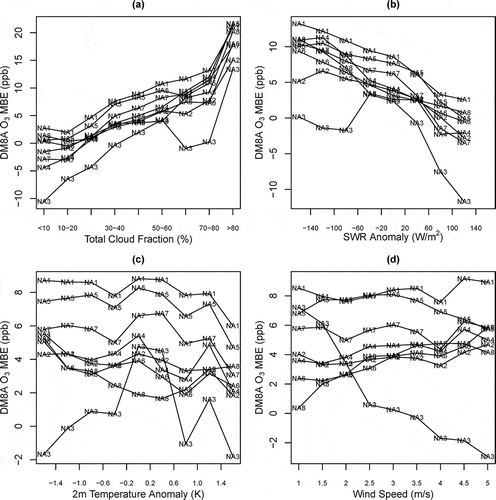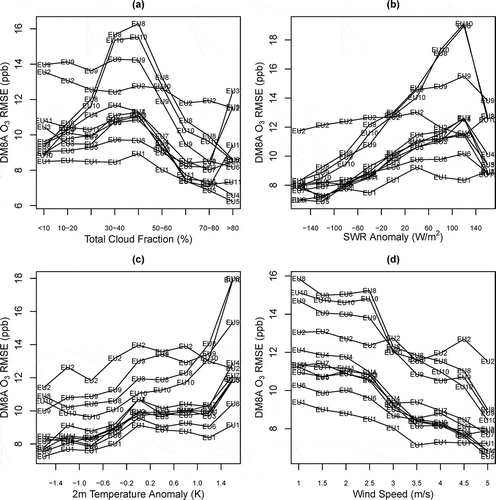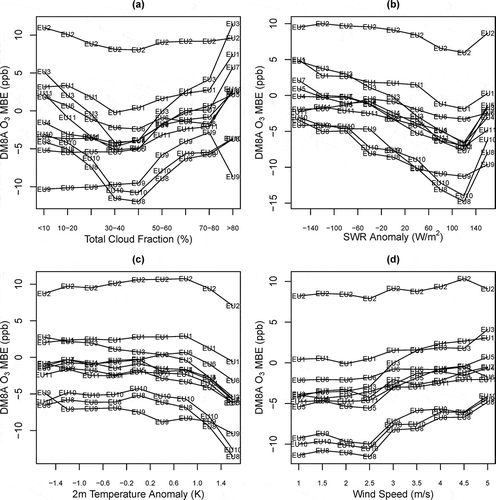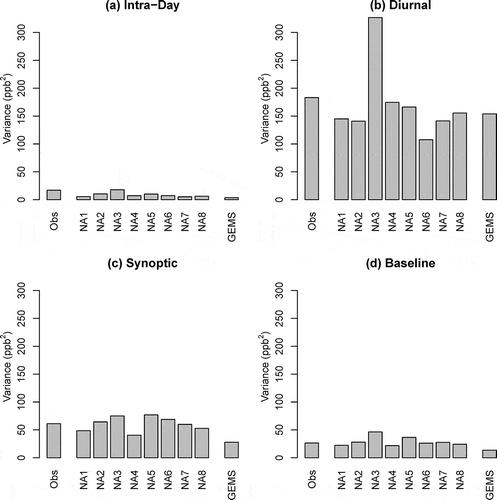Figures & data
Table 1. List of modeling systems analyzed in this study
Table 2. Frequency of occurrence of the different synoptic patterns for the E. NA, W. NA, and EU map typing domains
Table 3. Definition of analysis regions for stratifying operational model performance based on synoptic patterns
Figure 1. Box-and-whisker plots of RMSE and MBE for NE and N. EU domains for each model and each pattern. The all-pattern results are also shown for each model. Boxes-and-whiskers represent the distribution of RMSE and MBE across the monitoring sites in the analysis domains. On either side of the box, the whiskers extend to the most extreme data point or 1.5 times the interquartile range (i.e., the difference between the 25th and 75th percentiles), whichever is less.
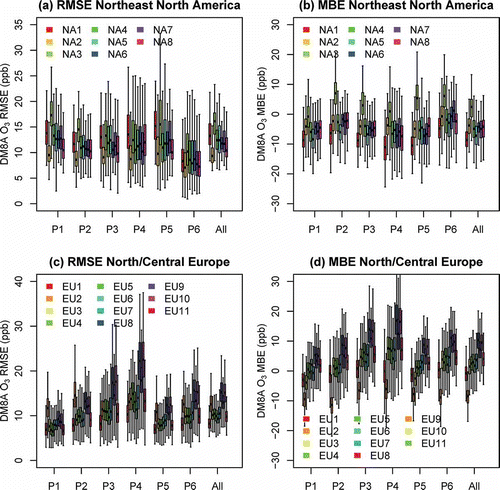
Table 4. (a) RMSE and (b) MBE of DM8A ozone for each synoptic pattern for the three analysis regions in the eastern NA map typing domain
Table 5. (a) RMSE and (b) MBE of DM8A ozone for each synoptic pattern for the three analysis regions in the western NA map typing domain
Table 6. (a) RMSE and (b) MBE of DM8A ozone for each synoptic pattern for the two analysis regions in the EU map typing domain
Figure 2. RMSE of DM8A ozone for different models over the eastern NA map typing domain as a function of (a) pattern average cloud fraction, (b) pattern short-wave radiation anomalies, (c) pattern 2-m temperature anomalies, and (d) pattern average wind speed.
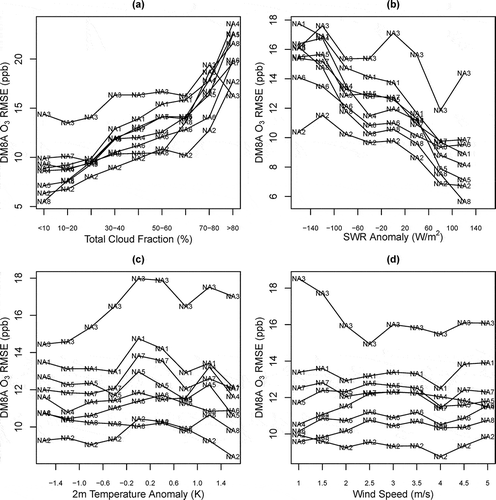
Figure 6. Power spectra of observations, regional model simulations, and global model simulations used as boundary conditions for most regional model simulations. The power spectra were calculated separately at each site and then averaged over all sites. (a) NA, (b) EU.
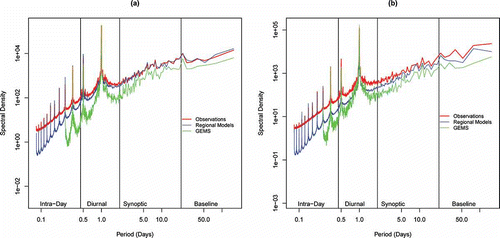
Figure 9. Box-and-whisker plots of correlation coefficients between observations and model simulations for different temporal components. (a) NA, (b) EU. On either side of the box, the whiskers extend to the most extreme data point or 1.5 times the interquartile range (i.e., the difference between the 25th and 75th percentiles), whichever is less.
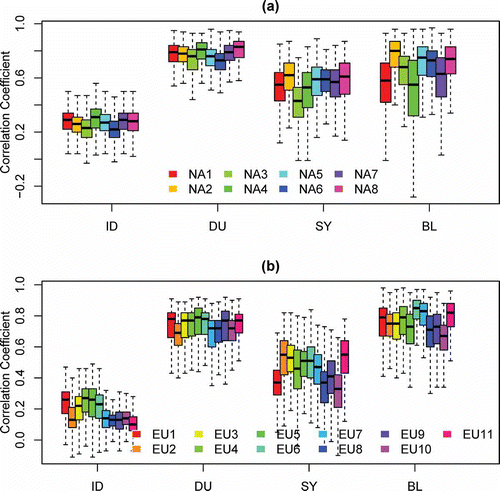
Table 7. RMSE and correlation coefficient at regionally representative and locally influenced sites over (a) NA and (b) EU
Table 8. RMSE and correlation coefficient at rural, suburban, and urban sites over (a) NA and (b) EU
Figure 10. Box-and-whisker plots of observed and simulated e-folding distances at regionally representative and locally influenced sites as defined in the text. (a) Locally influenced sites, NA; (b) regionally representative sites, NA; (c) locally influenced sites, EU; (d) regionally representative sites, EU. On either side of the box, the whiskers extend to the most extreme data point or 1.5 times the interquartile range (i.e., the difference between the 25th and 75th percentiles), whichever is less. The dashed line represents the median observed e-folding distance.
